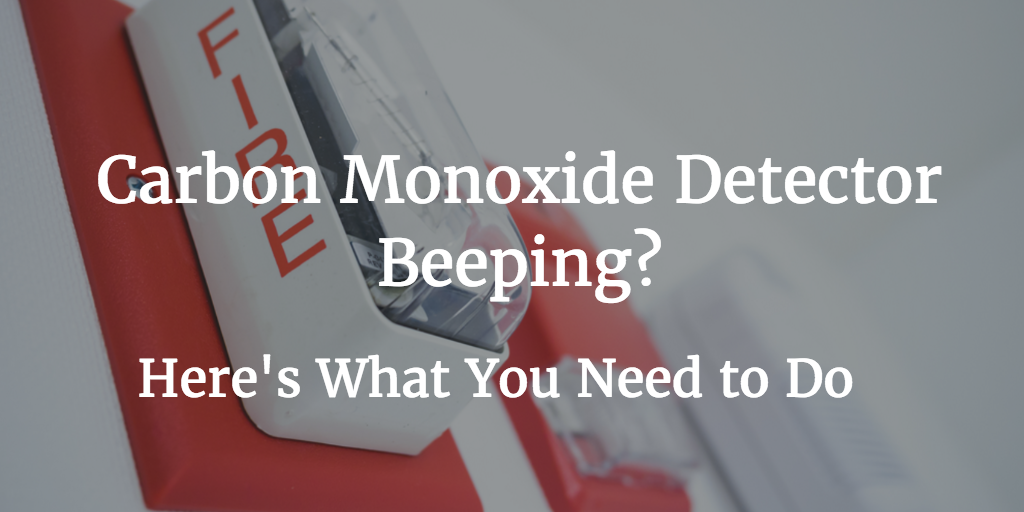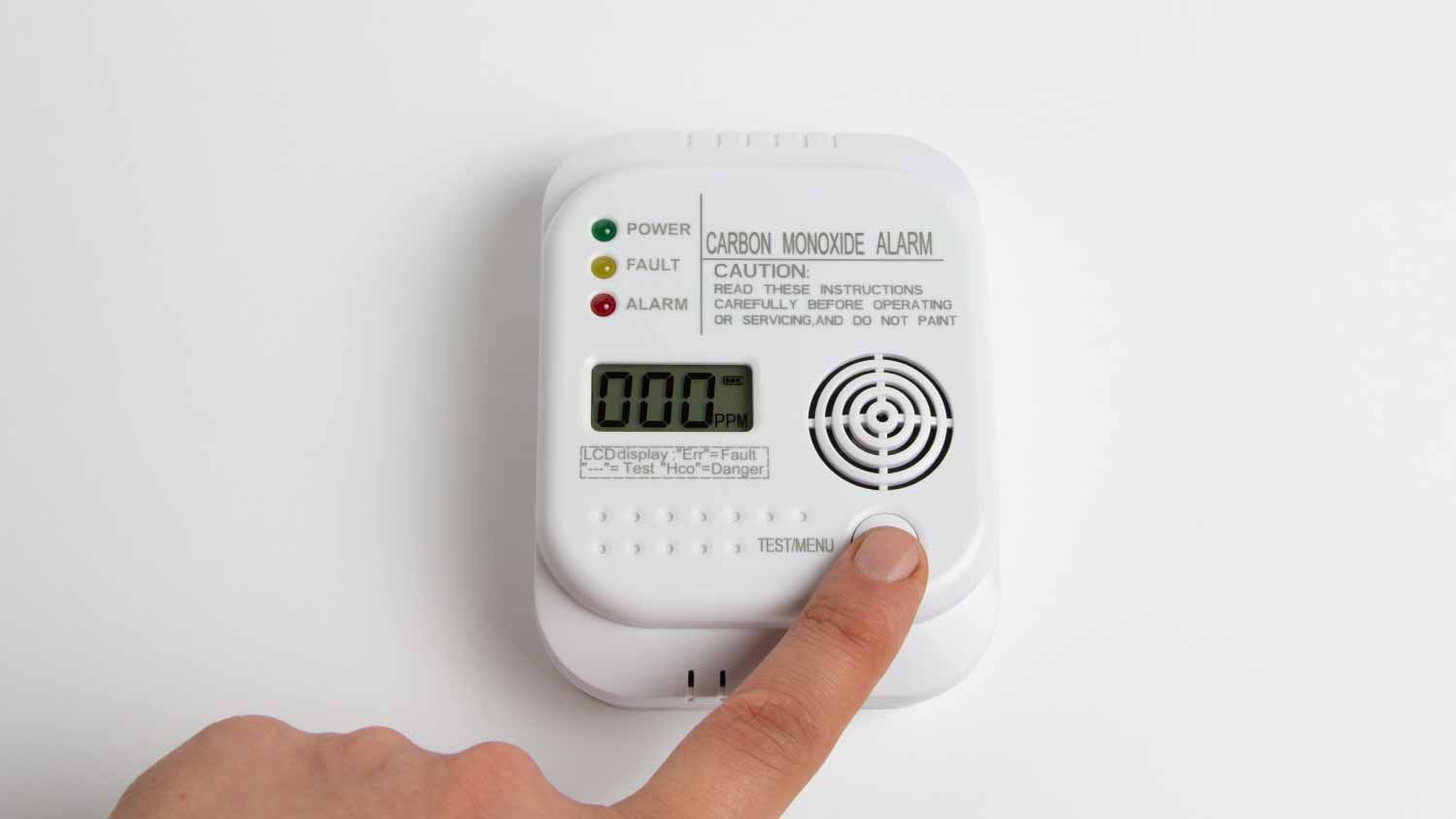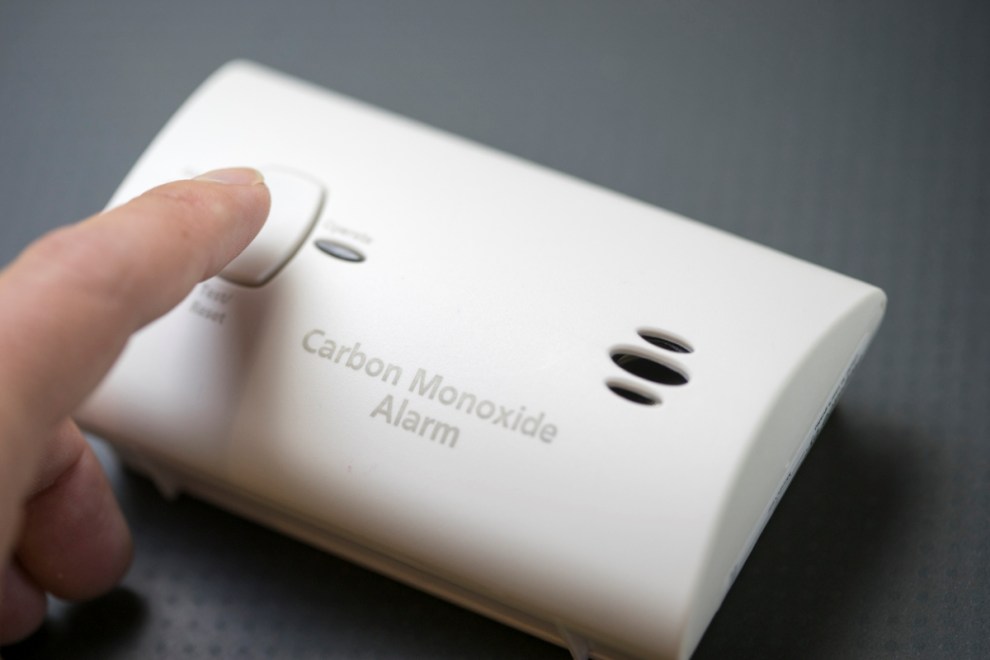Why Did My Carbon Monoxide Detector Beep

Your carbon monoxide (CO) detector just beeped. This sound can be alarming, and it's important to understand why it's happening and what to do next. This guide will walk you through the various reasons your CO detector might be beeping, helping you differentiate between a true emergency and a simple low-battery warning.
Understanding Carbon Monoxide and Your Detector
Carbon monoxide (CO) is an invisible, odorless, and deadly gas. It's produced by the incomplete burning of fuels such as natural gas, propane, oil, wood, and gasoline. Common sources of CO include furnaces, water heaters, stoves, fireplaces, generators, and car exhaust. Because you can't see, smell, or taste it, CO is often called the "silent killer."
A carbon monoxide detector is designed to alert you when dangerous levels of CO are present in your home. It does this by continuously monitoring the air and triggering an alarm when the CO concentration exceeds a safe threshold. These thresholds are established by safety standards to give you time to react before serious health effects occur.
Think of your CO detector as a vigilant guard, constantly watching for an invisible threat. It’s crucial that it functions correctly and that you understand its signals.
Decoding the Beeps: Different Types of Alarms
Not all beeps are created equal. Your CO detector uses different beeping patterns to indicate different situations. It's crucial to distinguish between a true CO alarm and other types of alerts.
True CO Alarm: The Emergency Signal
A true CO alarm typically consists of four quick beeps followed by a pause, and then repeated. This indicates that the detector has detected a dangerous level of carbon monoxide. This is a serious situation that requires immediate action.
What to do when you hear a true CO alarm:
- Evacuate immediately: Get everyone out of the house, including pets. Don't hesitate.
- Call 911 or your local fire department from outside: Explain that your CO detector is alarming.
- Do not re-enter the home: Wait for emergency responders to arrive and clear the house. They will use specialized equipment to determine the source of the CO and ensure it's safe to return.
- Seek medical attention: Even if you feel fine, get checked out by a doctor. CO poisoning can have delayed effects.
Low Battery Warning: A Simple Fix
A single beep, often repeated every minute or so, usually indicates a low battery. This is a common issue, especially in detectors that are powered solely by batteries. The detector is simply telling you that it needs a new power source to continue functioning properly.
What to do when you hear a low battery warning:
- Replace the battery immediately: Use the correct type of battery specified in your detector's manual.
- Test the detector: After replacing the battery, press the test button to ensure the detector is working correctly.
- Consider hardwired detectors with battery backup: These offer the best of both worlds – reliable power from your home's electrical system and a backup battery in case of a power outage.
End-of-Life Signal: Time for a Replacement
Most CO detectors have a limited lifespan, typically 5-10 years. After this time, the sensor inside the detector can become less reliable. To alert you that it's time for a replacement, the detector may emit a specific beeping pattern, often accompanied by a message on the display (if equipped). This pattern varies by manufacturer, so consult your owner's manual.
What to do when you hear an end-of-life signal:
- Replace the detector immediately: Do not attempt to repair the detector. It's designed to be replaced, not repaired.
- Check the expiration date: Most detectors have an expiration date printed on the back. Use this as a guideline.
- Choose a new detector with up-to-date technology: Consider features like digital displays, voice alerts, and interconnected alarms.
Malfunction or Error Signal: A Sign of Trouble
Some CO detectors may emit a different beeping pattern to indicate a malfunction or error. This could be due to a sensor failure, internal component issue, or other technical problem. Again, the specific pattern will vary depending on the manufacturer.
What to do when you hear a malfunction or error signal:
- Consult the owner's manual: Identify the specific beeping pattern and its meaning.
- Try resetting the detector: Some detectors can be reset by pressing and holding the test button for a certain amount of time. Refer to your manual for instructions.
- If the problem persists, replace the detector: A malfunctioning detector cannot be trusted to accurately detect CO.
Troubleshooting Common Beeping Issues
Sometimes, a CO detector might beep for reasons that aren't immediately obvious. Here are some common troubleshooting steps:
- Check the battery: Even if the detector isn't emitting a low-battery warning, try replacing the battery to rule out a weak battery.
- Clean the detector: Dust and debris can interfere with the sensor. Gently vacuum the detector with a soft brush attachment.
- Relocate the detector: CO detectors should be placed on each level of your home and near sleeping areas. Avoid placing them near windows, doors, or vents, where drafts can affect their accuracy. Also, keep them away from direct sources of humidity like bathrooms.
- Test the detector regularly: Press the test button at least once a month to ensure the detector is working properly.
- Consider temporary environmental factors: In rare cases, temporary environmental factors can trigger a false alarm. For instance, certain cleaning products or chemicals, if released in high concentrations near the detector, could cause a false positive. If you suspect this, ventilate the area and monitor the detector.
Preventing Carbon Monoxide Poisoning
While CO detectors are crucial, they're only one part of a comprehensive strategy for preventing carbon monoxide poisoning. Here are some essential safety tips:
- Have your fuel-burning appliances inspected annually: This includes furnaces, water heaters, stoves, fireplaces, and chimneys. A qualified technician can identify and correct potential CO leaks.
- Never use a generator indoors: Generators produce high levels of CO. Always operate them outdoors, away from windows, doors, and vents.
- Never use a gas stove or oven to heat your home: These appliances are not designed for heating and can produce dangerous levels of CO.
- Make sure your vehicle's exhaust system is in good condition: A damaged exhaust system can leak CO into the passenger compartment.
- Never run a car in a closed garage: Even for a short time, running a car in a closed garage can produce lethal amounts of CO.
- Install CO detectors on every level of your home and near sleeping areas: This ensures that you'll be alerted to the presence of CO, no matter where you are in the house.
Choosing the Right Carbon Monoxide Detector
When it comes to choosing a CO detector, consider the following factors:
- Power source: Choose between battery-powered, hardwired, or combination models. Hardwired models with battery backup offer the most reliable protection.
- Sensor technology: Electrochemical sensors are the most common and reliable type.
- Features: Look for features like digital displays, voice alerts, and interconnected alarms. Interconnected alarms can communicate with each other, so if one detector detects CO, all of them will sound the alarm.
- Certification: Make sure the detector is certified by a recognized testing laboratory, such as UL (Underwriters Laboratories).
- Price: CO detectors range in price from affordable to premium. Choose a detector that fits your budget and provides the features you need.
Don't Ignore the Beep
In conclusion, a beeping carbon monoxide detector should never be ignored. Understanding the different types of beeps and what they mean is essential for protecting yourself and your family from the dangers of CO poisoning. Remember to evacuate immediately if you hear a true CO alarm, and take the necessary steps to address other beeping issues, such as low battery or end-of-life signals. Regular maintenance and proactive prevention are key to ensuring your safety.
When in doubt, always err on the side of caution and call 911 or your local fire department. It's better to be safe than sorry when it comes to carbon monoxide.










